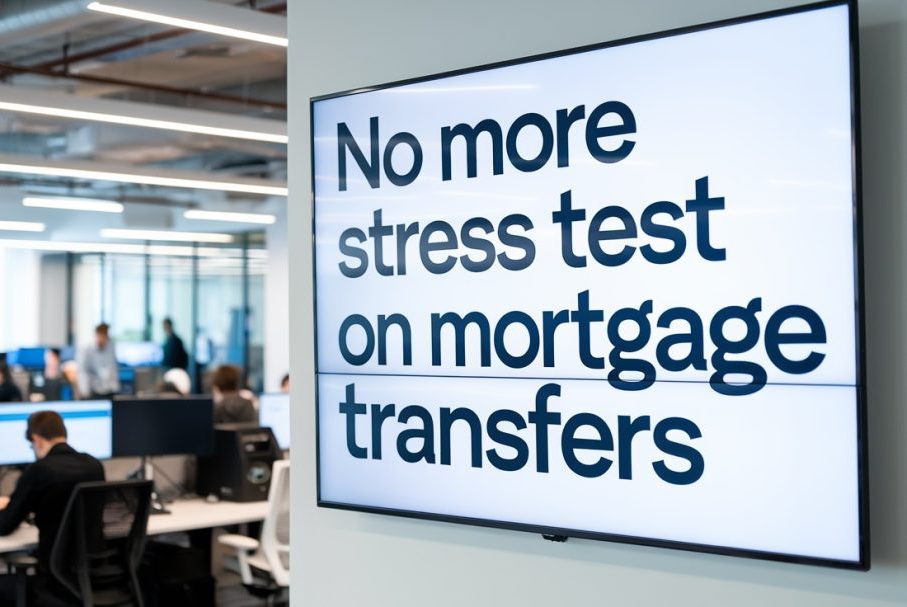Since 2018, anyone applying for a mortgage in Canada has been required to pass a mortgage “stress test.” This test ensures borrowers qualify at a higher interest rate than the rate their payment was based on, acting as a safety net if rates increase. While some have criticized the stress test, I’ve always supported it—especially during the era of rock-bottom mortgage rates.
The biggest problem was if rates were to rise, then many would no longer be able to afford their mortgage payments. And rise they did. The stress test provided a buffer to protect borrowers by requiring them to qualify at a higher rate right from the beginning.
The stress test is logical when purchasing a new home or refinancing an existing mortgage, but why on earth would they force people to pass the stress test when simply transferring a mortgage to another lender at time of renewal? It just doesn’t make any sense. Here you have people who already have tight finances, and they were removing their option to switch their mortgage to a lower rate to make things a bit more manageable for them. Brutal.
Fortunately, as of November 21st , 2024, the Office of the Superintendent of Financial Institutions (OSFI) will no longer require borrowers to pass the stress test when transferring their mortgage to another lender. It’s about time.
What Exactly Is a Mortgage Transfer?
A mortgage transfer (or switch) means that you’re simply transferring your current balance and remaining amortization over to another lender, generally when you reach your mortgage’s maturity (renewal) date. If you need to increase your amortization and/or mortgage balance, then it would be considered a refinance, and the stress test would then apply.
The Mortgage Stress Test: A Quick Refresher
The stress test is another way of saying minimum qualifying rate (MQR). More simply put, it means that you must qualify with payments based on a rate higher than the one used to calculate your actual mortgage payment.
Borrowers are required to qualify based on the higher of two rates:
- The benchmark rate, which is currently 5.25%
- Your contract rate +2.00%
For example, if your actual mortgage rate is 3.94% (the lowest current insured rate as of today), the stress test rate would be 5.94%. As this is higher than the benchmark rate (5.25%), it’s the rate that is used for your qualification.
How the Mortgage Stress Test Impacts Borrowing Power
In 2023, most fixed rate mortgages were over 6%, which meant a MQR of greater than 8%. This substantially reduced the amount one would qualify for. If the lowest available was 6.25%, then this would mean a minimum qualifying rate of 8.25%.
Based on the higher rate, a couple with a combined household income of $150,000 would expect to qualify for a maximum mortgage of roughly $600,000. When rates were lower, that same couple would have qualified for around $800,000 using the MQR of 5.25%. A whopping $200,000 more. Huge difference.
Does it Make Sense to Eliminate the Stress Test Completely?
As mortgage rates continued to rise in 2023, some were calling for the elimination of the stress test all together. Did it really make sense to force people to qualify at rates greater than 8%?
The reason why the OSFI hung in there with the is because there never any guarantees in the financial world. While unlikely, there is nothing to say that we wouldn’t see mortgage rates move above 8%.
They also needed to keep in mind that what goes up must come down. They needed to be prepared for mortgage rates to fall again, so they left the stress test where it was. While many do not like it, it helps to protect us, ensuring that there is plenty of room to absorb the impact of a higher mortgage rate at time of renewal. While no one wants to have to accept a higher rate, at least they are already qualified for one.
Final Thoughts
The elimination of the stress test for mortgage transfers is a win for borrowers, providing much-needed flexibility and choice at renewal. It’s a step toward a fairer system that balances financial protection with practical options for managing household budgets.
For questions about your mortgage options or how these changes might affect you, feel free to reach out. Let’s make sure you’re positioned to save as much money on your mortgage as possible.








Leave A Comment